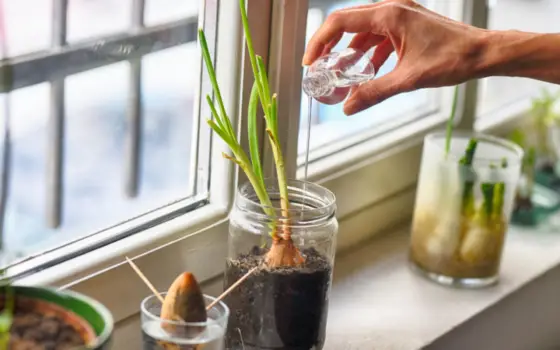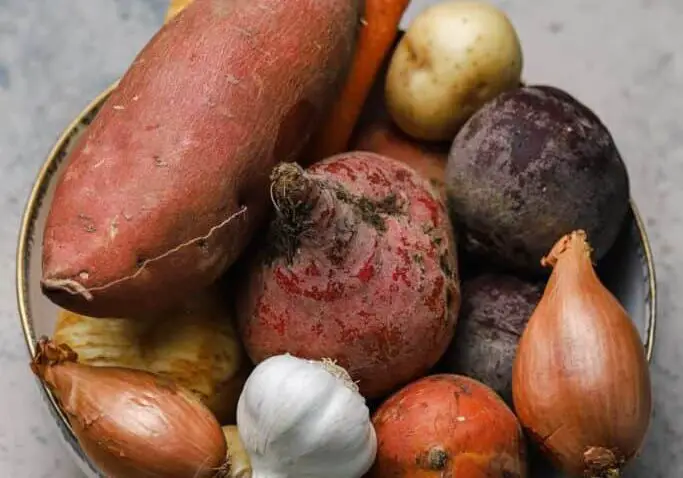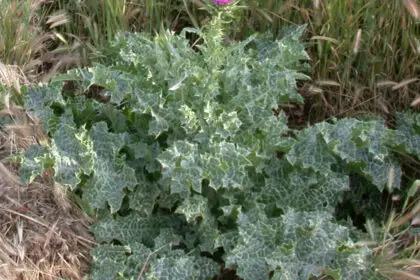What if I told you that you’ve been tossing out hundreds of dollars each year on groceries? With the cost of produce on the rise, we cut corners when it comes to what we choose to purchase at the grocery store. But what if I told you that you can regrow your fruit and vegetable scraps?
Learning: An Indoor Classroom
Indoor gardens can teach children about the origin of food, creating a powerful connection to the dinner plate and the effort that goes into what they eat. Kids can help plant, water and harvest produce, and after spending time caring for the plants, they’ll be more apt to eat those fruits and veggies that seem to get tossed to the side at dinner. The same goes for adults, we will inevitably cherish the food we eat because we’re growing it ourselves. Super plus, your home will look great and decorated with green.
Health: Yourself, Your Children, And Your Planet
When a family chooses to make an indoor garden, their diet becomes healthier. Each scrap you grow will be packed with vitamins, minerals, and antioxidants. Food is meant to be pure and it’s meant to be shard. What’s more pure than growing it yourself and knowing the exact ingredients used to make your garden prosper. You can create a routine around growing your scraps to keep the family unit intertwined in creating something together.
Produce You Can Grow Again From Scraps
Basil, Mint, Cilantro, Parsley
- Grab a glass jar (mason size).
- Fill each jar with about 2 inches of water.
- Snap the tip and bottom of each herb bundle, and place it into the glass or jar of water.
- Place a ziplock or sandwich bag over each herb bundle to create a moist atmosphere.
- Place in the fridge or on your counter. Keep them away from windows if extreme heat or cold is present.
- Add more water as they grow.
- Make sure that your herbs are growing in bundles. It keeps them fresher for longer periods of time.
- Store in the fridge if they aren’t being used immediately.
Green Onion, Leeks, Fennel, Lemongrass, Scallion, Onion, Shallots and Garlic
- Using the root end, cut two inches upward so your left with just the root.
- Do not cut too short. Cut them near where the rubber band usually resides when purchasing them at a market.
- Only cut a couple of the greens off of each plant. This keeps it producing longer.
- Don’t pull the whole plant when harvesting. Gently trim to avoid root breakage.
Root Vegetables
fruit and vegetable scraps
Turnips, Beets, Ginger, Potatoes, Carrots and Radishes
- Beet, radishes, beets and turnips: Cut off the top, but leave 1/2 inch of the beet or turnip attached. Place the scrap in shallow water, cut side down and leaf end up, and fresh greens will soon appear.
- Potato: Place whole potato in water and watch it sprout. Replant your sprouts in soil or eat the sprouts as is.
- Ginger: Dry 2-3 half inch slices of fresh ginger at room temperature overnight. Plant the root scrap 1 inch deep in soil. Watch it grow! When you harvest your ginger, gently pull up a root and leave the rest for another time.
- Remove and clean pit.
- Locate which end is “up” and which end is “down”
- Pierce with three toothpicks.
- Place seed half-submerged in a glass of water.
- Wait for the avocado seed to sprout.
- Pot in soil when tree is about 15cm tall.
- Water and watch it grow.
- Pinch out top leaves to encourage bushiness.
Survival Farm Video Tutorial fruit and vegetable scraps
Would you like a garden that grows organic food on autopilot? That produces 8x more food than a regular garden? Click here to watch the video tutorial.
Why wait to start growing your indoor garden when the need for fresh produce in your diet doesn’t? Want to know how to grow tomatoes indoors?
Check out this video to add even more abundance to your indoor sanctuary:
How To Grow Tomatoes Indoors
Stop Throwing Away Your Banana Peels! They Fight Depression and Promote Weight Loss
STOP Throwing Your Celery Leaves Away – They Contain This Profile Of Minerals Beneficial For Heart Health, Bones & Crucial Cellular Hydration
STOP Throwing Your Watermelon Rind Away – It Contains Expensive Glutathione For Free Which Let’s Your Liver Detoxify
Recommended Reading:
UK City Is Turning All of Its Bus Stops Into Green Pollinator Roof Gardens for Bees
Growing Food This Spring? Pay Close Attention To These three Things And Learn How To Grow A Food Forest in Your Backyard
Below Is a quick “How do I grow it?” tutorial to get you kick started with your indoor garden today!
LEAFY GREENS
fruit and vegetable scraps
Lettuce, Celery, Bok Choy
- Cut your leafy veggie leaving at least 2 inches for regrowth.
- Place the 2 inches of root or growth end in a jar or glass.
- Add a small amount of water to cover the roots (1 1/2 inches).
- As it grows, add more water to keep the roots trenched.
- Keep them growing longer by cutting pieces and not the whole plant.
Basil, Mint, Cilantro, Parsley
- Grab a glass jar (mason size).
- Fill each jar with about 2 inches of water.
- Snap the tip and bottom of each herb bundle, and place it into the glass or jar of water.
- Place a ziplock or sandwich bag over each herb bundle to create a moist atmosphere.
- Place in the fridge or on your counter. Keep them away from windows if extreme heat or cold is present.
- Add more water as they grow.
- Make sure that your herbs are growing in bundles. It keeps them fresher for longer periods of time.
- Store in the fridge if they aren’t being used immediately.
Green Onion, Leeks, Fennel, Lemongrass, Scallion, Onion, Shallots and Garlic
- Using the root end, cut two inches upward so your left with just the root.
- Do not cut too short. Cut them near where the rubber band usually resides when purchasing them at a market.
- Only cut a couple of the greens off of each plant. This keeps it producing longer.
- Don’t pull the whole plant when harvesting. Gently trim to avoid root breakage.
Root Vegetables
fruit and vegetable scraps
Turnips, Beets, Ginger, Potatoes, Carrots and Radishes
- Beet, radishes, beets and turnips: Cut off the top, but leave 1/2 inch of the beet or turnip attached. Place the scrap in shallow water, cut side down and leaf end up, and fresh greens will soon appear.
- Potato: Place whole potato in water and watch it sprout. Replant your sprouts in soil or eat the sprouts as is.
- Ginger: Dry 2-3 half inch slices of fresh ginger at room temperature overnight. Plant the root scrap 1 inch deep in soil. Watch it grow! When you harvest your ginger, gently pull up a root and leave the rest for another time.
- Remove and clean pit.
- Locate which end is “up” and which end is “down”
- Pierce with three toothpicks.
- Place seed half-submerged in a glass of water.
- Wait for the avocado seed to sprout.
- Pot in soil when tree is about 15cm tall.
- Water and watch it grow.
- Pinch out top leaves to encourage bushiness.
Survival Farm Video Tutorial fruit and vegetable scraps
Would you like a garden that grows organic food on autopilot? That produces 8x more food than a regular garden? Click here to watch the video tutorial.
Why wait to start growing your indoor garden when the need for fresh produce in your diet doesn’t? Want to know how to grow tomatoes indoors?










